CORSICA
History

History

Cities in CORSICA
| Ajaccio |
Popular destinations FRANCE
| Alsace | Ardeche | Auvergne |
| Brittany | Burgundy | Cevennes |
| Corsica | Cote d'azur | Dordogne |
| Jura | Languedoc-roussillon | Loire valley |
| Lot | Normandy | Picardy |
| Provence |
History
Oldest History
Some 6,500 years ago, in the pre-Neolithic period, people already lived in Corsica. Evidence of this is provided by the skeleton of the “Lady of Bonifacio” dated to 6570 BC and found in 1975. They were cave dwellers who lived off hunting and fishing and probably came from Tuscany on the Italian mainland and from Sardinia, the Italian island south of Corsica. Corsica belonged to Liguria around that time.
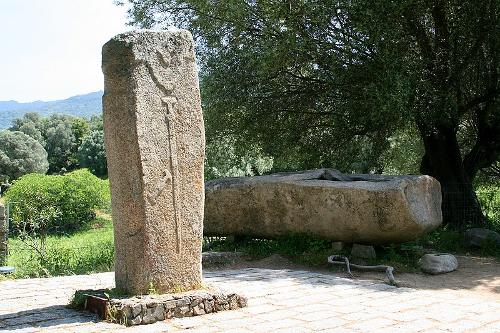 Menhirs at Filitosa South CorsicaPhoto: Jean-Pol GRANDMONT CC 3.0 Unported no changes made
Menhirs at Filitosa South CorsicaPhoto: Jean-Pol GRANDMONT CC 3.0 Unported no changes made
In the New Stone Age (Neolithic period 6000-1800 BC) the Corsicans learned to grow cereals and sheep and goats are kept. From that time on, stone weapons and utensils were also used. The first houses were built in the late Neolithic period (3300-1800 BC) with the help of the many large stones lying on the island. Characteristic of this period are the so-called “alignements”, rows of large stones or menhirs (also called dolmens) placed upwards to human figures. Menhirs were also placed with graves in tribute to the deceased.
In the Bronze Age from 1800-700 BC. small fortified villages were already being built by tribes formed at that time. During that period, the well-armed Torreans also arrived in Corsica, forcing the Corsicans to flee to Northern Corsica. Unlike the Corsicans, the Torreans had bronze daggers and swords at their disposal. They also built temples in the shape of towers. From 600 BC. the name Corsica occurs, among others among the Phoenicians who maintained a barter trade with the Corsicans. Approx. 550 BC. the Focaiers, chased from Greece by the Persians, landed on the east coast of Corsica. They were merchants who did much business with Sicily, Spain, France and Italy, and they founded the settlement of Alalia, where Aléria is now located.
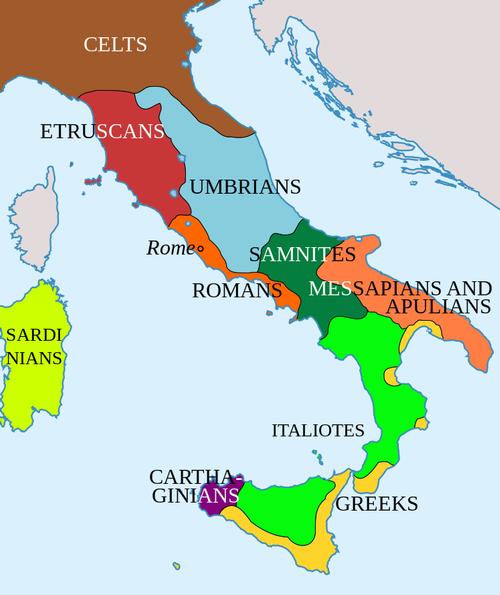 Italian peninsula ca.400 BC.Photo: Richardprins CC3.0 Unported no changes made
Italian peninsula ca.400 BC.Photo: Richardprins CC3.0 Unported no changes made
Corsica is occupied by ... almost everyone
These Focaiers were chased away by the Carthaginians and the Etruscans. Because Carthage and Rome came to blows, the Roman general Scipio was ordered to drive the Corsicans out of Alalia and destroy the city. This succeeded without much effort and from 221 BC. Corsica became a province of the Roman Empire. All this time the Corsicans were forced to withdraw inland and now and then handed out a few pinpricks against the various invaders. They also managed to build some inland cities.
Christianity was introduced in the Roman period, but its spread was difficult due to the violent opposition of the Romans. In 410 Rome was conquered by the Goths and Corsica was liberated from the Roman yoke. That freedom did not last long, however, because Corsica was subsequently occupied by Vandals, Goths, Longobards, Byzantines and Greeks. The Greeks stayed the longest and among them the Corsicans had a very difficult time, partly because of the high taxes that they had to pay to the Greeks. Greek rule lasted about two centuries. In 713, the Greeks were chased away by the Saracens who would only engage in looting the island. In 807 Corsica was occupied by the Moors, who turned the population even more on the thumbs. Many Corsicans therefore fled to the French mainland. Attempts by other countries to expel the Moors (Muslims!) Have failed for the time being.
In 833, however, the Tuscan Count Bonifacio managed to build a fortress on the southernmost tip of Corsica. Yet it would take more than 150 years before the Moors would be chased away by Italians. In return for services rendered, a number of Italian soldiers and fleeing nobles were assigned a castle and a piece of land. But these so-called “barons” also oppressed the Corsican population and fought many wars among themselves. The Corsicans no longer took it and, under the leadership of Sambucuccio de Alando, they succeeded in sidelining the Italian barons for a while. An alliance was established, the Terra del Commune, in which each Corsican province could delegate one or two mayors. Unfortunately, after Sambucuccio's death, the barons regained power.
Pisans and Genoese
In 1077, Pope Gregory VII was given the right to Corsica by the French king. However, this pope gave the island as a fief to the cardinal of Pisa, Italy, at that time Genoa's largest trade competitor. This finally worked out well for the Corsicans because cities were rebuilt, roads and bridges were built and of course many churches were built. Many watchtowers were built along the coast to be able to spot enemies in time.
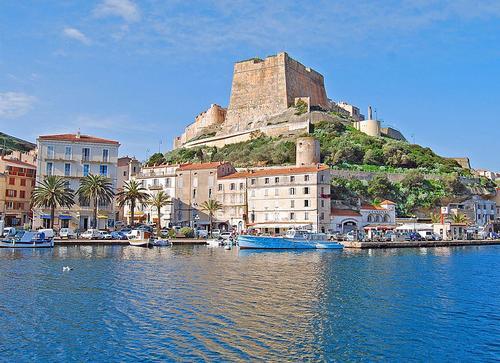
In 1217, the Genoese conquered the strategically located Bonifacio and founded a Genoese trading colony there. With the help of the Corsican freedom fighter Sinucello de Cinarca, the Genoese were defeated, but in 1221 Sinucello's army was defeated and the Corsicans finally renounced their right to Corsica. The Pope gave Corsica, along with Sardinia, to the King of Aragon in Spain. However, they also failed to chase away the Genoese. Now, however, the population revolted again under the leadership of Arrigo della Rocca. After a failed attempt, he defeated the Genoese in 1392, was soon defeated by the same Genoese, but then conquered all Corsica again with the exception of the strongholds of Bonifacio and Calvi.
This history was repeated several more times until the resistance of the Corsicans was finally broken by the Genoese in 1515. In 1547, however, another attempt was made to liberate Corsica from the Genoese. This time it was King Henry II, together with the Turkish fleet and the Corsican Sampiero Corso, who made an attempt. In 1553 Corsica, except for Calvi, was taken by the French, but in 1559 Corsica was again assigned to the Genoese during the peace of Cateau-Cambrésis. Sampiero now made one last all-or-nothing attempt with a small but strong army. At first, Sampierro and his men rained down one after the other victory, but Sampierro was ambushed and killed. The Corsicans' resistance was now broken and there was nothing left but to sign the peace treaty with the Genoese. The Genoese now built even stronger and higher towers (12-17 meters high) along the coast. Some of them are still on Cap Corse, among others.
Around 1730 it became restless on the island, partly due to the tax increases that the Genoese continued to implement. When some Corsican soldiers were also beheaded, the population demanded revenge. However, the Genoese received help from Charles VI who sent a large army of German mercenaries. In 1732 an armistice was decided.
On March 12, 1736, the German Theodor von Neuhoff happened to arrive in Corsica on an English ship full of cannons, rifles, ammunition and a lot of money. In exchange for the kingship of Corsica, the Corsicans received the weaponry. A few months later, von Neuhoff left again to raise money to pay for his court. In 1743 he returned to Corsica but was declared persona non grata and was therefore not allowed to enter Corsica. One of the three leaders who took over Von Neuhoff's duties during his absence was Giampietro Gaffori. He also became the new leader when it became apparent that von Neuhoff would not return. He sought help from the English and together they managed to conquer Bastia and Corti. On August 10, 1746, Gaffori proclaimed independence and in 1751 a peace treaty was signed with Genoa. Gaffori was proclaimed Governor General of Corsica but was murdered by the Genoese in 1753.
Pascal Paoli and Napoleon Bonaparte
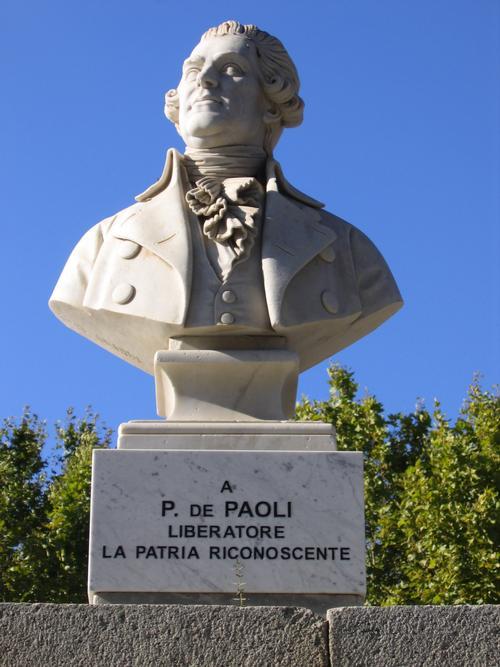
Pascal Paoli became the new leader of the Corsican resistance in 1755 and he would eventually become the Father of the Fatherland. He was a trained man with new ideas and carried them out. For example, he ensured democratic reforms as the right to vote for everyone over the age of 25. A general assembly was also called, he banned the “vendetta” (the blood feud), founded folk schools and in 1765 even the university of Corte. He also thought it necessary to have his own fleet.
In 1768 Corsica was sold to France by the Genoese for 200,000 pounds. The resistance was furious about this horse-trading and it was Carlo Bonaparte, the father of Napoleon Bonaparte, who declared war on France. The Battle of Borgo was won by the Corsicans, but on May 8, 1769, the Corsican army was destroyed by the army of Louis XV. On June 12, 1769, Corsica was declared French territory. Spurred on by the French Revolution, Paoli traveled to Paris to advocate the freedom of Corsica. This mission was successful, only the Corsican people were strongly divided and a civil war was imminent. Paoli immediately declared Corsica's independence but again asked the English for help. Peace was restored with a united effort and the old constitution was re-adopted, although the actual power was in the hands of the English King George III. This George III appointed Gilbert Elliott viceroy of Corsica, but the English withdrew from Corsica after a year.
Meanwhile, a certain Napoleon Bonaparte fought in the Corsican army. After a failed attempt to capture the citadel of Ajaccio from the English, he fled to the mainland and was considered a traitor by most Corsicans. When he arrived in France he quickly caused a furore in the army and that eventually led to the emperor. During his campaign in Italy in 1799, he ended the English rule of Corsica and occupied the island. In 1811 he named his birthplace Ajaccio the capital of Corsica. The island soon became French, although Paris completely ignored the new acquisition. This only changed during the reign of Napoleon III, about the mid-19th century. He founded hospitals, built roads and railways, and many Corsicans were appointed to public positions.
First and Second World War
Despite this, many Corsicans moved to the French mainland in search of work and the group of Corsicans who wanted to secede from France was shrinking. It was therefore not surprising that many Corsicans fought side by side with the French in the First World War. More than 40,000 Corsicans would eventually die on the battlefields. The Second World War also affected Corsica. The Italian leader Benito Mussolini thought that Corsica belonged to Italy. The Corsicans obviously had a very different opinion about this, but the pro-German Vichy government changed tack on 11 November and ceded Corsica to the Italians. The same day Corsica was occupied by the Italians, followed a little later by the Germans.
Here and there resistance flared up against the occupiers who responded with intimidation, looting and the establishment of a concentration camp. This led to the establishment of a genuine resistance movement (maquisards) that made it increasingly difficult for Italians and Germans from within the maquis. They were helped by the Allies who smuggled many weapons and ammunition ashore. Despite fierce resistance from the Germans, they were defeated in the Golo Valley on October 4, 1943. The Italians had already surrendered a few months earlier, so that the war for Corsica was soon over.
Period of recovery, tourism and bombs
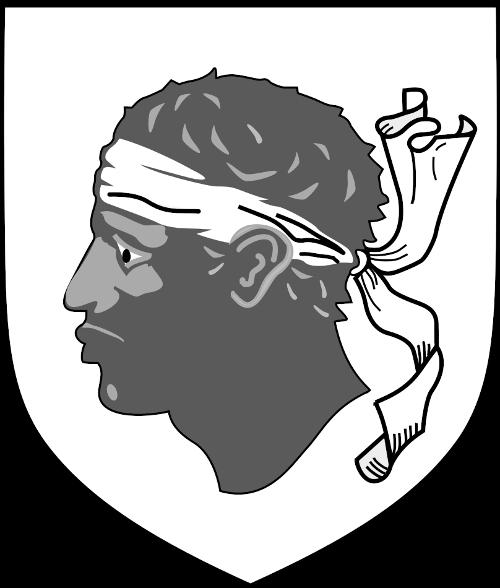 Coat of arms of CorsicaPhoto: Heralder CC 3.0 Unported no changes made
Coat of arms of CorsicaPhoto: Heralder CC 3.0 Unported no changes made
After years of repairs to houses and infrastructure, the French government decided from 1955 to modernize and expand agriculture. Despite this, many Corsicans still moved to the French mainland. In 1959, the Action Régionaliste Corse (ARC) was founded with the aim of preserving the tradition and culture of Corsica. They also strived for self-government. In 1975 the Front de Libération Nationale de Corse (FLNC), the Corsican liberation front, was founded.
From the 1960s, Corsica turned to tourism and many hotels and holiday resorts were built. In 1975 Corsica was divided into two departments. Bastia became the capital of the department of Haut-Corse and Ajaccio of the department of Corse du Sud. In 1982 Corsica got its own parliament with 61 seats and is allowed to make decisions in the fields of culture, education and the environment. However, a small minority still strives for autonomy and regularly makes this clear through bomb attacks, among other things.
The "peak" of the bombings was in the 1970s and 1980s. 111 attacks in 1973, 463 in 1980 and countless more since then. In the early 1990s, the FLNC falls apart due to personal conflicts and economic and political conflicts of interest. In 1996 a bomb exploded in the center of Bastia, injuring 12 people and dead. Fortunately, it is one of the few attacks where there are victims. In February 1998, Corsica was again startled by the assassination attempt on Prefect Érignac.
The so-called Matignon trial resulted in an agreement in the summer of 2001 between the French government and all Corsican parties. The agreement provides for a transition period of four years. After that, Corsica is given extensive autonomy with legislative powers.
Corsica was startled on October 18, 2002 by 15 explosive attacks. Banks and villas, among other things, were targeted, but there were no victims. Police suspected that separatists were carrying out the attacks.
In March 2006, right-wing politician Robert Feliciaggi was shot dead.
Two bombings were committed at the end of December 2007, and one of them, on an army barracks, injured two people.
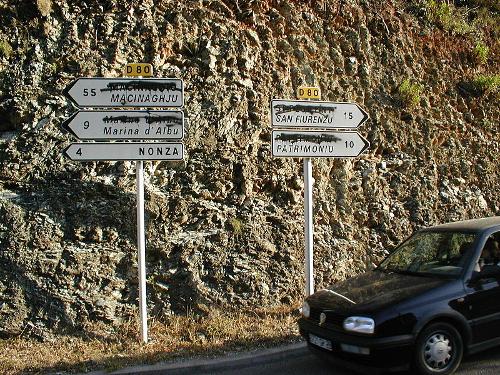 Corsican nationalists scratch French place namesPhoto: FDominec CC 3.0 Unported no changes made
Corsican nationalists scratch French place namesPhoto: FDominec CC 3.0 Unported no changes made
See also the history of France on TheWorldOfInfo.
Sources
Corsica
Lannoo
Corsica
Lonely Planet
Corsica
Touring/Lannoo
Driessen, J.W. / Corsica
Elmar
CIA - World Factbook
BBC - Country Profiles
Copyright: Team The World of Info